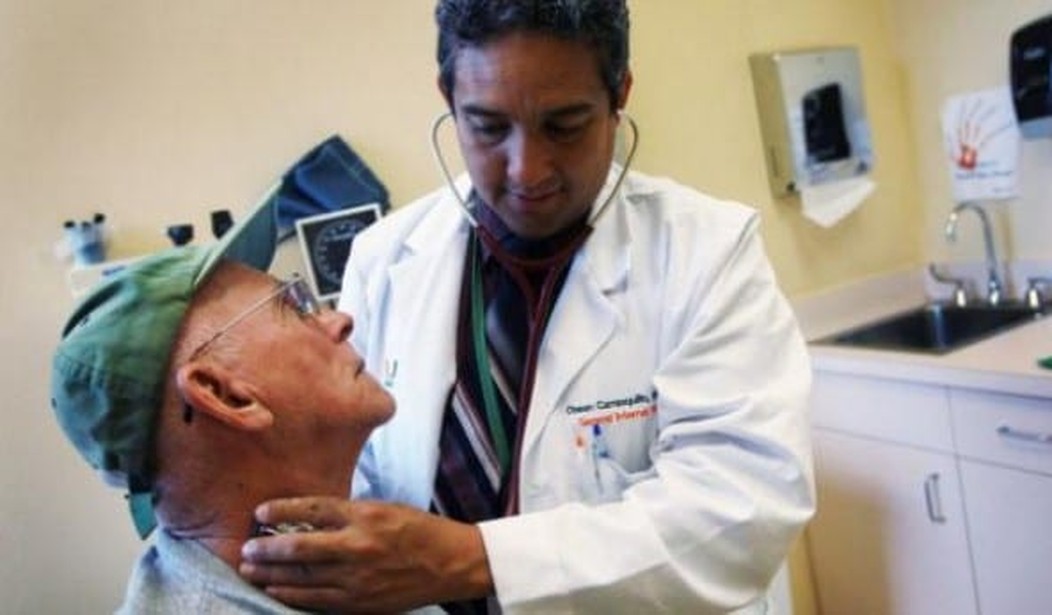One of the thing we’ve been told over the years is the value of the regular check up with your doctor. This visit is supposed to allow you to identify diseases and conditions early enough to provide your doctor with the opportunity to treat it before it becomes a serious condition.
Now a study suggests that check ups don’t do much at all.
Citizens who were told routine health checks were too expensive and so people did not get them, to the detriment of their health and higher costs later, just got good and bad news; the good news is that a new review says people don’t need them. The bad news is that will be a reason not to have them available when the Affordable Care Act goes into force.
Check-ups don’t reduce overall deaths or prevent serious diseases like cancer and heart disease, according to Cochrane researchers who carried out a systematic review on the subject. They warn against offering general health checks as part of a public health program, which is the opposite of what Americans have been told by the medical community for decades.
…
In some countries, general health checks are offered as part of standard practice, which should reduce deaths and ill health by enabling early detection and treatment of disease. Instead, there are potential negative implications, for example diagnosis and treatment of conditions that might never have led to any symptoms of disease or shortened life.
…
However, based on nine trials with a total of 11,940 deaths, the researchers found no difference between the number of deaths in the two groups in the long term, either overall or specifically due to cancer or heart disease. Other outcomes were poorly studied, but suggested that offering general health checks has no impact on hospital admissions, disability, worry, specialist referrals, additional visits to doctors or time off work.
This finding falls in line with recent recommendations by the US Preventive Services Task Force. This organization has recommended that mammograms not be rountinely recommended and that PSA screening not be used as a diagnostic tool for prostate cancer. This is not a benign recommendation as health care providers are not required to provide services which the USPSTF recommends against. Similarly, the medical establishment is unified against the use of full body CT scans as tool for diagnosing previously undiagnosed diseases.
In the mammography controversy, the USPSTF concluded that while mammograms in younger women saved some lives, it just didn’t save enough of them:
While roughly 15 percent of women in their 40s detect breast cancer through mammography, many other women experience false positives, anxiety, and unnecessary biopsies as a result of the test, according to data.
I would submit that given the choice between breast cancer and “anxiety” most women will choose anxiety.
But their rationale in this case loops back to the finding that check ups do no good. From the previous article on routine mammography:
“All we are saying is, at age 40, a woman should make an appointment with her doctor and have a conversation about the benefits and harms of having a mammography now versus waiting to age 50,” said Dr. Diana Petitti, vice chair of the task force.
Therein lies the problem. Most of us don’t look forward to going to see a doctor. We go because we have an illness we can no longer ignore… or because of a routine check up. Even when we are there, we are reluctant to complain about ailments. In the case of conditions like high blood pressure and Type II diabetes and glaucoma — conditions with huge quality of life implications but not covered in the study — there are virtually no symptoms that will compel you to seek medical care until you are irretrievably ill.
One would like to take the best view of this trend but given the politics and economics of the situation it is difficult to do so. These moves seemed designed to reduce up front medical costs and prevent chronic medical conditions from being discovered until they have progressed to a point where they are serious, if not fatal, conditions.
This is a way of minimizing that 70% of medical expenses that do not occur during the last year of life by simply not diagnosing and managing them over a period of decades. And as we’ve already seen, once you become seriously ill it is very easy to start trimming expenses from the last year of life.














Join the conversation as a VIP Member